 Surgery is recommended when the patient feels significant pain or when the cyst interferes with activity.
Surgery is recommended when the patient feels significant pain or when the cyst interferes with activity.
It is also recommended if the ganglion is compressing nerves in the wrist, since this can cause problems with movement and feeling in the hand.
Surgery is usually done using regional anesthesia, which means only the arm is put to sleep, but it can also be done under a general anesthesia in which you go to sleep.
Dorsal Wrist Ganglion
Doctors have two options to surgically treat dorsal wrist ganglions.
The first is cyst puncture and . (Aspiration means drawing the fluid out with suction.) However, this procedure has less than a 50 percent success rate.
Excision, or removal, of the cyst is the second option.
Removing the cyst is usually effective if the stalk that connects the cyst to the joint capsule and a bit of the surrounding capsule are removed.
Usually only a single incision is made, but depending on the location of the ganglion, a second incision may be necessary.
To , a small incision is made in the back of the wrist. The tendons that run across the back of the wrist and into the fingers are retracted (or moved) out of the way. This allows the surgeon to see the ganglion and follow it down to where it attaches to the wrist capsule. Once the surgeon locates this stalk, the entire ganglion is removed, including the area where it attaches to the joint capsule. The joint capsule may or may not need to be repaired with sutures. Finally, the skin incision is closed with sutures.
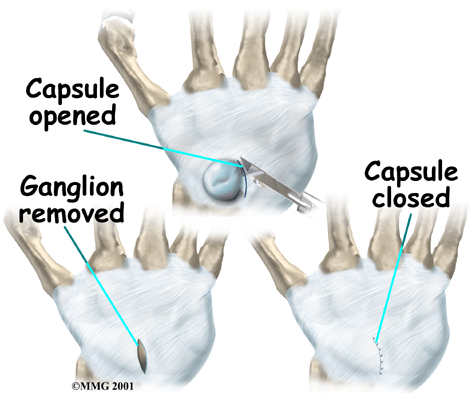
Volar Wrist Ganglion
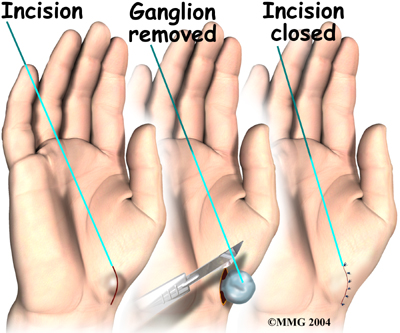 Puncture and aspiration is not recommended for volar wrist ganglions located in certain areas because of the possibility of nerve and blood vessel damage. In other areas, needle puncture has a better success rate.
Puncture and aspiration is not recommended for volar wrist ganglions located in certain areas because of the possibility of nerve and blood vessel damage. In other areas, needle puncture has a better success rate.
Excision is the most common surgery for a volar wrist ganglion. is usually effective if the stalk that connects the cyst to the joint capsule and a bit of the surrounding capsule are removed. The surgical procedure is basically the same, except the volar ganglion is usually very close to the radial artery (the artery in the wrist used to feel someone's pulse). In some cases, the volar ganglion even winds around the artery. This makes removing the ganglion a bit more difficult. The surgeon must be careful to protect the artery, while at the same time removing the cyst down to the joint capsule, just like with the dorsal ganglion.


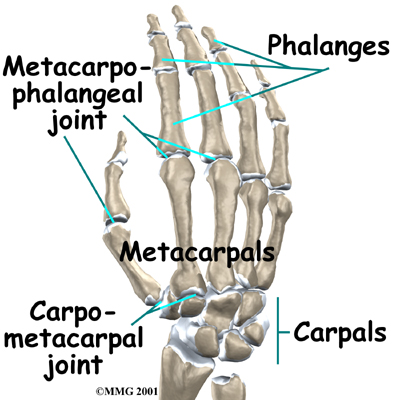
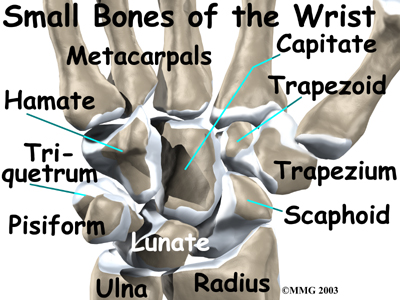
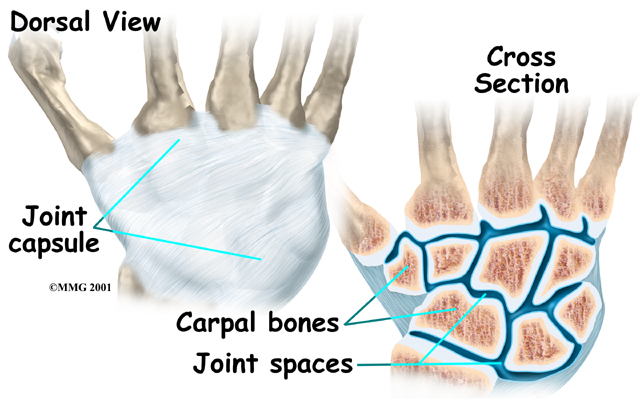 The ligaments allow the bones to move in all directions. These ligaments meld together to form the
The ligaments allow the bones to move in all directions. These ligaments meld together to form the 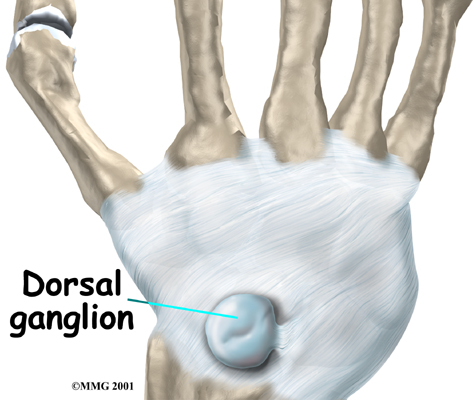 Wrist ganglions are attached to the wrist joint capsule. Typically only one ganglion appears, often in a location that is predictable to doctors. However, ganglions have been seen in almost every joint in the hand and wrist.
Wrist ganglions are attached to the wrist joint capsule. Typically only one ganglion appears, often in a location that is predictable to doctors. However, ganglions have been seen in almost every joint in the hand and wrist.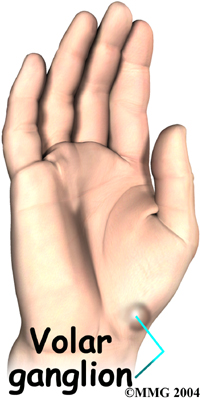
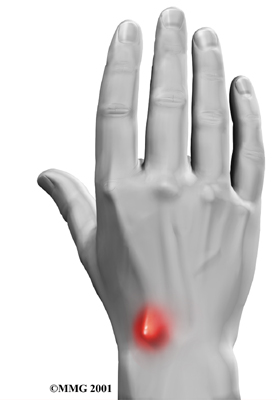
 Surgery is recommended when the patient feels significant pain or when the cyst interferes with activity.
Surgery is recommended when the patient feels significant pain or when the cyst interferes with activity.
 Puncture and aspiration is not recommended for volar wrist ganglions located in certain areas because of the possibility of nerve and blood vessel damage. In other areas, needle puncture has a better success rate.
Puncture and aspiration is not recommended for volar wrist ganglions located in certain areas because of the possibility of nerve and blood vessel damage. In other areas, needle puncture has a better success rate.

 (403) 679-7179
(403) 679-7179  concierge@one-wellness.ca
concierge@one-wellness.ca 

